
Last week we took a fresh look at Jesus’ meeting a Samaritan woman at Jacob’s well and while some of what we looked at may have been surprising we didn’t look at the central message of Jesus. Jesus said he could give her living water, and that whoever drank of it would never thirst again. This is the first time Jesus uses this metaphor (John 4), and from the second use (John 7) we know that the living water he is referring to is the Holy Spirit. Where did this idea of “living water” come from? Would you believe the well?

This marks the start of a prolonged series on the Gospel of Luke. As we’ve already examined the book of Acts, it seems reasonable that the first Gospel we study should be Luke as both share a common author. Ask anyone to compare the gospels and two facts will almost always be mentioned: (1) that John is the Gospel of Love, and (2) that Luke is the Historical Gospel. While it is true that John gives us a look into Jesus’ personal struggles and relates stories not contained in any other gospel account, it is not true that Luke is purely a historical account.
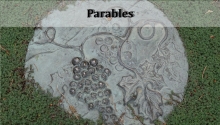
There are two kinds of people in the world, those who find parables to be powerful lessons and those who view them as incoherent allegories. I used to be a part of the later camp, struggling to understand many of Jesus’ most memorable teachings. I could not find any help even among the best preachers and commentaries. I had to be missing something. No one seemed to be able to structure parables in a way that unlocked their lessons. If Jesus’ followers could understand them, why couldn’t I? The answer lay in a method that is both new and more than two millennia old.
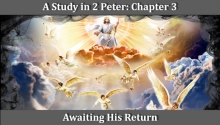
Peter takes a time-out to briefly explain why he is writing not only this letter, but all of that which follows as well. He wrote his letters to remind the readers to think about truth and to live in its light. The authority for truth is, once again (see 1.16-22 for Peter’s previous lesson on who teaches the truth), from God’s holy prophets and the apostles. The truth we have from God through these men is to change both our perspective and our life direction. He uses the judgment of the end times to stimulate obedience to God’s Word.

Yesterday we examined the concept of “living water” in John 4 and John 7, connecting the idea to Genesis 26 and the well of Abraham. We learned that Jacob’s well was the inspiration for Jesus to refer to “living water” in John 4, but what inspired him to make his second reference to this illustration later in John 7? The answers are there in the text, if we are familiar with Jewish feasts -- something I believe is vitally important the more I read the New Testament. All believers ought to be familiar with the seven feasts God instituted early on.
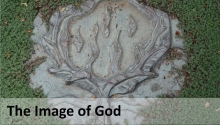
As you may recall, a few weeks ago I had some visitors at my door, visitors with strange theology. One of the examples I mentioned previously is their view of the image of God. They believe that the image of God is gender, and that since we were created male and female that the Holy Spirit must be female -- despite the fact that Jesus refers to the Spirit as “he” throughout John chapter 14. Furthermore, the language of Genesis 1.26-28 draws the distinction of the image between man and animal, not male and female. Gender has nothing to do with it.

Is it an all-original movie, or a reboot of the Brendan Frasier series beloved by many and which spawned a series of B-movies about the Scorpion King? That’s the question I asked walking into the theater, and afterward the question I was still asking. And while the movie stars A-list actor Tom Cruz, is action packed and full of spectacular imagery and special effects, that wasn’t the only point of confusion I walked away with. I’ve watched a lot of supernatural thrillers and horror movies, none have ever left me feeling conflicted at the end. In that regard, this movie is a first.
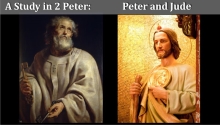
Before moving on to chapter three in our series on 2 Peter, we need to recognize chapter two’s similarities with the book of Jude. The writer identifying himself as Jude, was most likely the half-brother of Christ, son of Mary and Joseph. He did not consider himself worthy of the titles “apostle” or “brother,” as he did not believe in Jesus until after a post-resurrection appearance (John 7.5). Both passages warn of apostates infiltrating the church, that they will be rooted out as God has done before, and that we are to live holy lives in patient endurance until Jesus’ return.
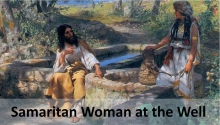
This marks the start of a prolonged series on the Gospel of Luke. As we’ve already examined the book of Acts, it seems reasonable that the first Gospel we study should be Luke as both share a common author. Ask anyone to compare the gospels and two facts will almost always be mentioned: (1) that John is the Gospel of Love, and (2) that Luke is the Historical Gospel. While it is true that John gives us a look into Jesus’ personal struggles and relates stories not contained in any other gospel account, it is not true that Luke is purely a historical account.

Happy Rosh Hashanah! For those new to the site, a couple, maybe three years ago, we did a series on the seven feasts God told the Israelites (in Deuteronomy) to celebrate. There are four feasts in the Spring and three in the Fall. All the feasts have two characteristics, they look back at a time God rescued the people of Israel and look forward toward a prophecy about the Messiah. The prophecies found in the four Spring feasts were all fulfilled during Jesus’ first coming and were accomplished on the actual feast days, the last three will be realized in the same way.
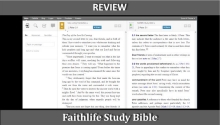
When we started our study on 2 Peter last month I mentioned that I would be using an online tool I found, and later review it for our readers. That tool was the Faithlife Study Bible, available as an app for iOS and Android devices, and as a browser-based app at bible.faithlife.org. While we’ve published information about the equipment we use to research, write and produce this site, we’ve never formally reviewed a product before. That’s something that is about to change; we look forward to bringing you more.
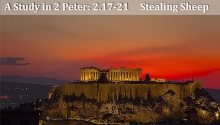
Peter has thrown down the gauntlet. In the first part of chapter two he has given a warning to false teachers, explaining God’s skill at judging the wicked (Noah’s flood and the cites of Sodom and Gomorrah are provided as examples) and at rescuing the righteous (Noah’s and Lot’s families are cases in point). He now turns his attention to warning those who follow false teachers. If false teachers are headed toward destruction and eternal punishment, how can their followers escape the same fate? It may appear that they are escaping self-control and discipline, but are really running toward God’s punishment.

